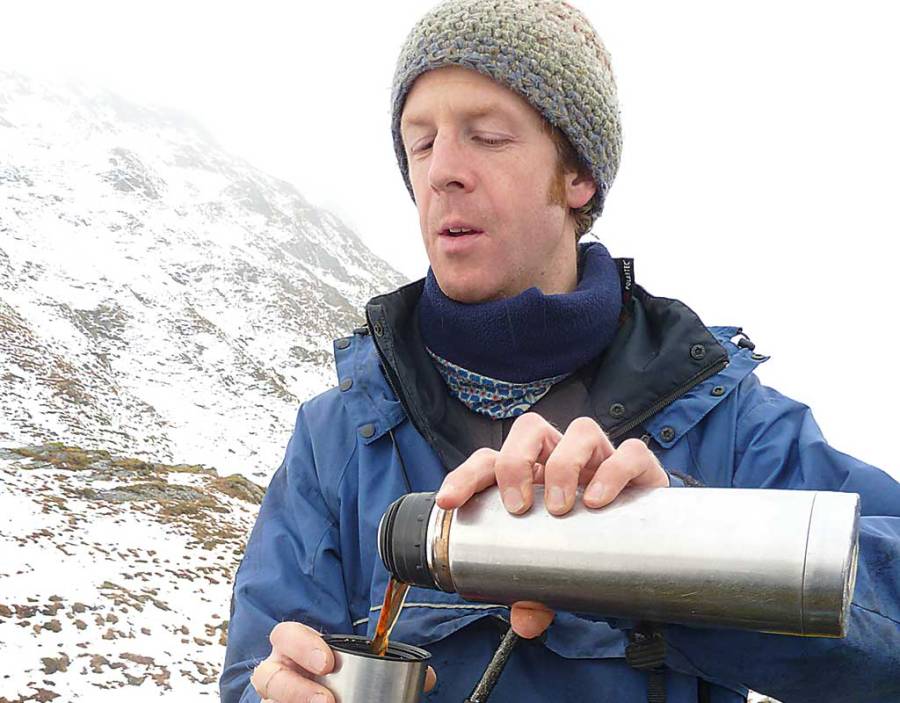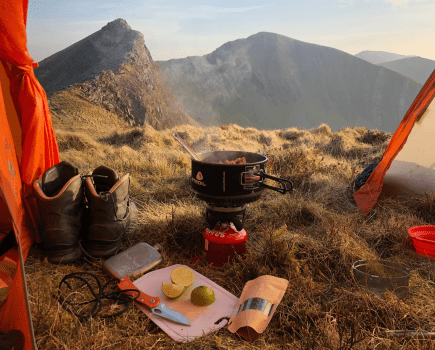Plas y Brenin’s Pete Catterall presents 5 handy tips to keep hydrated on the hills in winter
Although dehydration is a problem typically associated with the summer season, it’s something that hillwalkers need to be aware of in the winter as well. As Plas y Brenin instructor Pete Catterall points out, dehydration doesn’t only occur when the body is overheating; it can be a problem even when the mercury starts to plummet. “It’s not so much the cold that affects hydration, but the fact that you don’t feel the need to drink as much in winter,” he explains. “You are not using fluid to cool yourself like in the summer, so you don’t drink enough.”
Am I dehydrated?
“The first signs of dehydration are a dry mouth and feeling thirsty. This sounds really obvious and simple, but don’t ignore thirst. After that, look for the colour in your urine. If it’s not clear then you’re dehydrated. The darker it gets, the more dehydrated you’re getting. By ignoring these first two signs you will already be dehydrated and not performing at your best physically and mentally. Beyond these stages you can experience muscle cramps, headaches and light-headedness.”
Quantity
“Make sure you’re fully hydrated before leaving the house. From then on, it’s good to carry 1.5 to two litres of water, and to listen to your body: drink little and often when you feel you need a drink. For overnight trips you should make sure you’re able to obtain a fresh supply of water, so there is no need to carry extra.”
Sanitation
“High mountain streams that are flowing should be a safe source of clean water. Ensure there are no animals or other contaminates in the water by walking upstream a few hundred metres if necessary. You can get some great water purification systems too.” [The Great Outdoors recommends Platypus GravityWorks 2L Complete Kit, Water-to-Go Water Bottle and Sawyer Squeeze Filter; see TGO July 2013]
Hydration packs
“Some packs now have an insulated tube section. If not, then tuck the tube down behind the pack and your back – this will work on all but the coldest days. Try to get a pack with a large opening at the top for ease of filling and cleaning. Some also come with a built-in gauge so you can see how much you’re drinking each day. My top tip for winter is to go for the CamelBak 3 Litre with an Antidote Thermal Control Kit. It’s perfect for cold days out!”
Hot drinks
“In winter have a choice of a hot drink or a cold drink. I recommend taking both, as cold drinks are generally more thirst-quenching while hot drinks will give a motivational boost and hydrate the body. Tea and coffee aren’t that pleasant cold, so I recommend hot orange or lemon squash – or my personal favourite, Bottle Green Ginger and Lemongrass.”
If you would like to find out more about Plas y Brenin, the National Mountain Sports Centre, visit www.pyb.co.uk or call 01690 720 214
(Interview: James Reader, image Emily Rodway)







